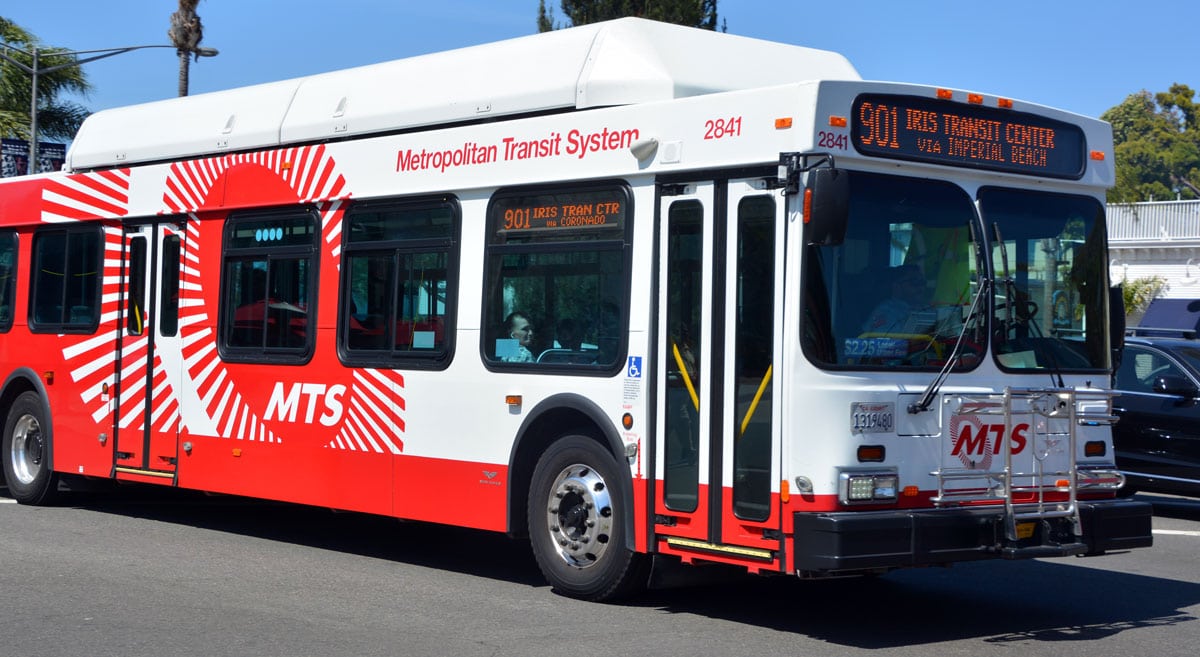REGION — After more than a year of vigorous debate, the SANDAG board of directors on Dec. 10 approved its 2021 Regional Transportation Plan, a robust and controversial transportation plan to help meet state-mandated climate goals.
The vote, which was 11-8 along party lines, calls for $162.5 billion in development and improvements to the region’s transportation system and transit lines to help reduce greenhouse gas emissions, or GHGs, over the next 30 years.
However, the plan‘s most hotly debated funding mechanism, a mileage fee for every driver, appears to be hanging in the balance as the board voted to direct SANDAG staff to eliminate the controversial road user charge in a potential future update. The fee proposed charging motorists 3.3 cents per mile beginning in 2030.
“This is a historic day, a historic plan and a historic vote,” SANDAG Chairwoman Catherine Blakespear said. “This centers on climate for the first time ever. It’s critical to invest in our under-invested communities. It’s an economy-building plan and the investments are important for those transit-dependent and want transit.”
According to SANDAG, the agency will “immediately” work on advancing projects such as relocating the rail line corridor off the bluffs, advancing the central mobility hub for direct connections to the San Diego International Airport, opening the Otay Mesa East Port of Entry and Smart Border Management system, the blue line express, purple line, the Regional Vision Zero action plan and Digital Equity Action Plan.
Proponents of the plan championed the plan’s forward approach to the climate crisis, incorporating technology to manage transportation and deliver equitable solutions for under-represented communities.
During a Dec. 9 interview with The Coast News, SANDAG Executive Director Hasan Ikhrata said the plan reduces emissions by 20.4% and increases overall ridership to 10% to meet the upcoming goals. The state has mandated a 19% reduction of GHGs by 2035.

Ikhrata told The Coast News it was critical the board approve the plan because if not, the agency would become ineligible for state and federal grants. In addition, the plan must be updated every four years, which means different funding strategies and options in the future may come available.
SANDAG Chief Economist Ray Major said the agency must conduct several studies regarding road user charges, new technology and other funding sources before the board can approve them, which will take several years to complete.
Blakespear said it’s critical that transit options are addressed right away, especially rail lines along the bluffs in Del Mar. Del Mar Mayor Terry Gaasterland “vehemently” opposed the road user charge but voted to approve the plan due to an urgency to protect the city’s temperamental and delicate bluffs by moving the rail line further inland.
Gaasterland said the Del Mar bluffs project must be done by 2030, but the plans list a 2035 completion date with options to expedite the project.
“A ‘yes’ vote should not be interpreted as blanket support for all the projects in this plan,” Gaasterland added. “It should be on a case-by-case basis. The city shares concerns over the funding mechanisms identified.”
Opponents, meanwhile, again lambasted the plan’s cost and proposed taxes and fees. But Ikhrata explained that SANDAG does not have the authority to enact a road user charge or any other taxes — a power reserved for the state legislature or voters.

However, several board members objected to proposed half-cent tax increases — two of which would be countywide and one in the city of San Diego for the San Diego Metropolitan Transit System — saying it would be a burden on low-income residents.
Vista Mayor Julie Ritter said she received about 5,000 emails regarding the proposed taxes and road user charge, with most residents voicing opposition against them. Ritter also balked at the proposed managed lanes, or toll roads, on the freeways, the potential for “value pricing” and the inability for most people to not be able to afford it.
San Marcos Mayor Rebecca Jones said managed lanes equal double taxation and the plan relies on mileage charges to generate $24.4 billion. The managed lanes would collect $19.2 billion, with sales taxes earning $27.8 billion.
Jones questioned how the agency could make up for $12.8 billion in lost revenue if the board moved forward with free transit for all, as proposed by several board members. Jones said she wanted a balanced transportation plan, but this version is not the solution.
Carlsbad Mayor Matt Hall said one of his biggest concerns was the cost increases to the plan from the union-back project labor agreement.
Hall said it could add 15% to 25% to the plan, while Ikhrata said the labor agreement, which goes before the board on Dec. 17 for final approval, has not been added into cost estimates. Some residents in East County said the plan is not equitable as the focus on transit impacts those in urban areas and the coast.



